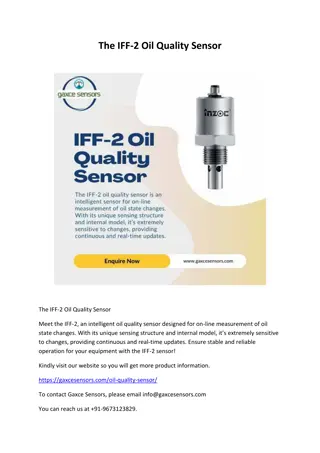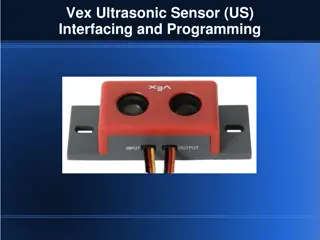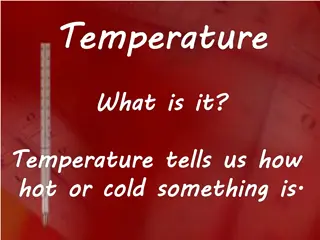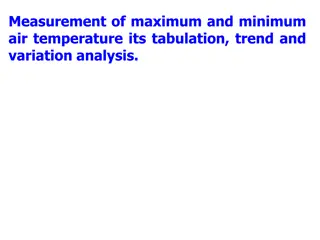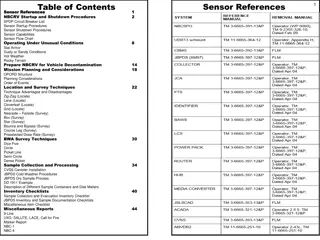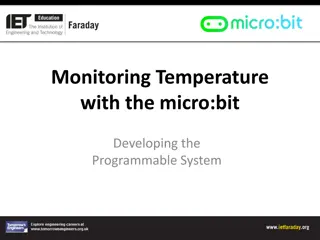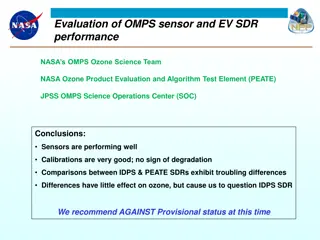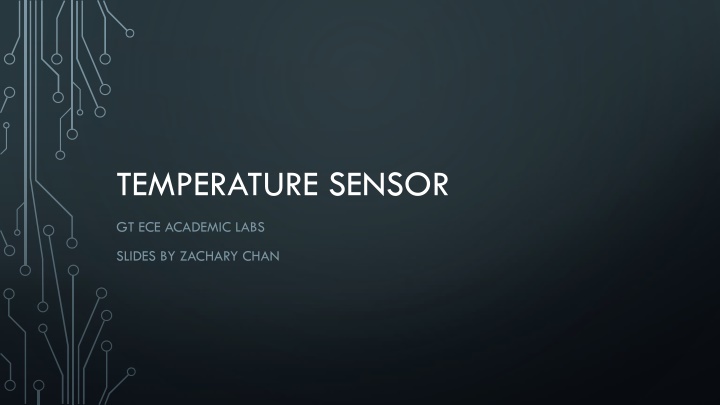
Comprehensive Guide to Temperature Sensors and Their Types
Explore the various types of temperature sensors such as Resistance Temperature Detectors (RTD), Thermistors, Thermocouples, and Semiconductor-based ICs. Learn about their working principles, applications, and advantages to help you choose the right sensor for your specific needs.
Download Presentation

Please find below an Image/Link to download the presentation.
The content on the website is provided AS IS for your information and personal use only. It may not be sold, licensed, or shared on other websites without obtaining consent from the author. If you encounter any issues during the download, it is possible that the publisher has removed the file from their server.
You are allowed to download the files provided on this website for personal or commercial use, subject to the condition that they are used lawfully. All files are the property of their respective owners.
The content on the website is provided AS IS for your information and personal use only. It may not be sold, licensed, or shared on other websites without obtaining consent from the author.
E N D
Presentation Transcript
TEMPERATURE SENSOR GT ECE ACADEMIC LABS SLIDES BY ZACHARY CHAN
OVERVIEW There are many types of temperature sensors Even within each temperature sensor type, there are subtypes Each sensor and their subtypes have different advantages and disadvantages Research should be done to determine the best type of sensor that should be used for your specific application
RESISTANCE TEMPERATURE DETECTORS (RTD) Device made of metal that linearly increases in resistance as temperature increases within a certain operational range 2, 3, and 4 wire types more wires means more accurate 2 wire less accurate because of the resistance of the wires (temp. will read higher than it actually is) 3 wire is most common for industrial applications and use a Wheatstone bridge to account for the resistance of the copper wires 4 wire can compensate for copper wire resistance even better with a more accurate Wheatstone bridge
THERMISTORS Similar to RTD in that heating causes increase in resistance However, thermistors use semiconductors that have nonlinear resistance- temperature curve because they re made of polymer or ceramic material Two types: Negative Temp. Coefficient (NTC) resistance decreases as temperature increases Often used as inrush current limiters Positive Temp. Coefficient (PTC) resistance increases as temperature increases Often used in overcurrent protection and resettable fuses
THERMOCOUPLE Works using the Thermoelectric Effect: two different metal wires connect at two junctions. When one junction is heated, a potential difference is created between the junctions, and the potential difference can be measured and correlated to temperature Many different types because there are many different metal combinations, creating different temperature ranges and tolerances Some common types: Type K: Nickel-Chromium/Nickel-Alumel, range of -270 to 1260 C, Type J: Iron-Constantan, range of -210 to 760 C
SEMICONDUCTOR BASED IC Semiconductor based ICs can be local or remote digital: local means it detects changes in an internal transistor and remote means it detects changes in an external transistor Local temperature sensors can have analog or digital outputs: analog outputs can be voltage or current while digital outputs have a variety of formats Remote digital temperature sensors have digital outputs
WHAT THEY LOOK LIKE RTD Semiconductor ICs Thermistors Thermocouples




